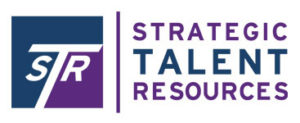Costly Mistake: Losing a Key Player
As CEOs and executive leaders, we all know our strengths/weaknesses. It is our goal to hire talent that rounds out and compliments those strengths/weaknesses. As your organization grows, if your recruitment department/recruiter is doing their job well, you’ll have a variety of strengths and weaknesses that complement each other and reinforce the culture of your organization. It is then that you need to ensure that employees within the same department and/or with comparable skill-sets are cross-trained. That way, you’re not caught with your pants down – in a desperate situation where you’ve lost a key player and have no one internally who can perform the same job duties until a new hire is made.
Per the Dictionary: “The key players in a particular organization, event, or situation are the most important people or things involved in it.” I couldn’t agree more! Now, what is one of your key players leaves? How do you determine the cost of losing such a player? Well, that all depends on how well you have prepared.
Cross training is smart business.
As the cost to you losing a key player, if you have prepared, will be significantly less detrimental to your pocketbook and to your organization’s day-to-day activities. Don’t have your people cross-trained? No need to panic! Take action. Get started right away – don’t delay! Here’s how you can get started:
1) Have your key player make a manual in case of absence. This should include relevant company passwords, login credentials, and any intricate details pertaining to their day-to-day duties.
2) Have the person directly below your key player (in title) sit with your key player for a week. Have them take notes on anything additional (beyond the manual already created) that are pertinent to that particular role.
3) Have your key player update their manual using the notes from the person they cross-trained. Make sure they update weekly to ensure the manual stays up to date.
Hire without time constraints
Hiring out of desperation, is risky because you are increasing the possibility of needing to spend resources on filling the need again in the near future. Rather, if you focused the resources and time on the front-end in ensuring key talent was cross-trained and ensuring you’re working with a Recruiting Firm/Recruiter whose focus is on the right fit and not the right now fit. Strong onboarding processes improve new-hire retention by 82 percent and productivity by over 70 percent, according to Brandon Hall Group research. Additionally, the research shows that companies with weak onboarding programs are more likely to lose these people in the first year.
Making hiring decisions out of desperation is never somewhere you want to be. First, you might not be hiring the best talent for the role. Instead, the focus is on patching the hole. Second, candidates can sense desperation and that raises concern about the stability of your organization or of your decision-making skills.In those moments, the mentality is “just find me someone who can do this” rather than “find me the RIGHT someone who can do this and fit the culture of our organization”.
Hiring quickly versus hiring the most qualified is risky because you are increasing the possibility of needing to spend resources on filling the need again in the near future. Rather, if you focused the resources and time on the front-end in ensuring key talent was cross-trained and ensuring you’re working with a knowledgeable Recruiting Firm/Recruiter whose focus is on the right fit and not the right now fit, you’re setting yourself up for success.

